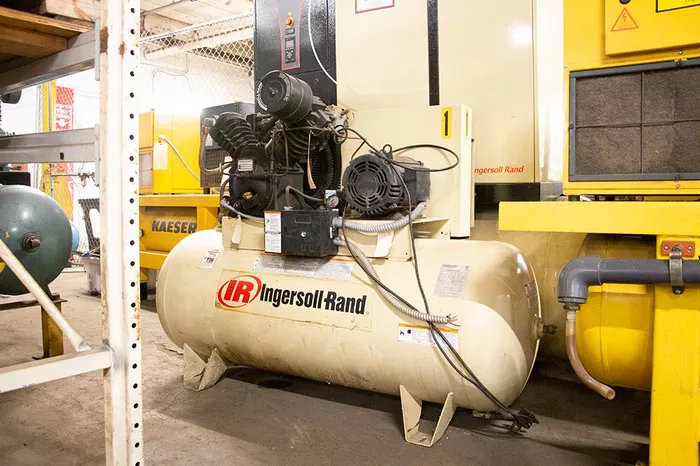Compressors play a pivotal role in numerous industrial processes by increasing the pressure of gases through mechanical energy. Among the various types of compressors, double-acting compressors stand out due to their efficiency and robust performance in high-demand environments. This article delves deeply into the principles, construction, operation, and applications of double-acting compressors, providing a comprehensive understanding for engineers, technicians, and industry stakeholders.
What Are Compressors
Compressors are mechanical devices that increase the pressure of a gas by reducing its volume. They are widely used in sectors such as oil and gas, refrigeration, air conditioning, manufacturing, and power generation. Compressors are generally categorized based on their working principle: positive displacement and dynamic compressors.
Positive displacement compressors function by trapping a fixed amount of gas and mechanically reducing its volume. This category includes reciprocating, rotary screw, and vane compressors. Dynamic compressors, on the other hand, utilize the momentum of the gas to increase its pressure, commonly seen in centrifugal and axial compressors.
Reciprocating compressors, a subset of positive displacement compressors, are further classified into single-acting and double-acting configurations. The double-acting compressor is the focus of this article.
What Is a Double-Acting Compressor?
A double-acting compressor is a type of reciprocating compressor where compression occurs on both sides of the piston during each stroke. This design contrasts with single-acting compressors, where compression takes place only on one side of the piston per stroke.
In a double-acting cylinder, each end of the piston alternately compresses the gas during the piston’s forward and return strokes. This design effectively doubles the capacity of the compressor without a proportional increase in size, making it a preferred choice in high-capacity and high-pressure applications.
Components and Construction
Double-acting compressors consist of several key components:
Cylinder: The chamber in which the piston moves.
Piston: The moving element that compresses the gas.
Piston Rod and Crosshead: Transmit force from the crankshaft to the piston while minimizing lateral forces.
Crankshaft and Connecting Rod: Convert rotary motion into reciprocating motion.
Valves (Suction and Discharge): Allow gas to enter and exit the cylinder at appropriate times.
Cooling System: Maintains operational temperatures within safe limits.
Lubrication System: Reduces friction and wear among moving parts.
Each cylinder has two working chambers (one on either side of the piston), each equipped with its own suction and discharge valves. This symmetrical design is crucial for achieving compression during both strokes.
How Do Double-Acting Compressors Work
The double-acting compressor operates through a four-stage process in each chamber during one full revolution of the crankshaft:
Suction Stroke (Side A): As the piston moves toward Side B, gas enters Side A through the suction valve.
Compression Stroke (Side A): The piston then moves back toward Side A, compressing the gas and forcing it out through the discharge valve.
Suction Stroke (Side B): Concurrently, Side B draws in gas as the piston moves toward Side A.
Compression Stroke (Side B): As the piston returns toward Side B, the gas is compressed and discharged.
This process results in a nearly continuous flow of compressed gas, improving the compressor’s efficiency and output.
Advantages of Double-Acting Compressors
Increased Efficiency: Compression on both strokes improves the volumetric efficiency.
Higher Output: Nearly doubles the output compared to single-acting compressors of similar size.
Space-Saving: Greater capacity without significantly increasing the machine’s footprint.
Energy Efficiency: More gas is compressed per revolution, reducing energy per unit volume compressed.
Disadvantages and Limitations
Complexity: More components and moving parts mean more maintenance and potential points of failure.
Cost: Higher initial and maintenance costs due to complexity.
Cooling Requirements: More effective cooling is required due to increased heat generation.
Lubrication Challenges: Effective lubrication is critical to ensure reliability and longevity.
Applications of Double-Acting Compressors
Double-acting compressors are prevalent in industries requiring high-capacity and continuous gas compression. Typical applications include:
Petrochemical Plants: Used in processes involving hydrogen, nitrogen, and natural gas.
Oil and Gas: Employed in gas gathering, transmission, and injection systems.
Power Generation: For air supply in control systems and other auxiliaries.
Manufacturing: Provides compressed air for tools, controls, and processes.
Refrigeration: In large-scale industrial and marine refrigeration systems.
Cooling and Lubrication in Double-Acting Compressors
Due to the continuous nature of the compression process, efficient cooling systems are crucial. Typically, water-cooled jackets surround the cylinders to dissipate heat. In some cases, inter-stage and after-coolers are also used to manage temperatures and protect downstream equipment.
Lubrication is equally vital. Many double-acting compressors use force-fed lubrication systems to ensure all critical components receive sufficient lubrication. In oil-free applications, special materials and coatings are used to reduce friction and wear without traditional lubrication.
Maintenance and Troubleshooting
Regular maintenance is essential to ensure reliability and efficiency. Key maintenance tasks include:
Inspection of valves: Ensuring they open and close correctly.
Piston and cylinder wear: Monitoring clearances and replacing worn parts.
Lubrication system checks: Ensuring proper oil flow and pressure.
Cooling system checks: Preventing overheating and scaling.
Vibration analysis: Detecting imbalances or mechanical issues early.
Common problems include valve failures, piston ring wear, overheating, and lubrication issues. Early detection and prompt corrective actions are crucial.
Technological Advancements
Modern double-acting compressors have benefitted from advances in materials, control systems, and diagnostics. Digital monitoring systems now allow for real-time analysis of pressure, temperature, vibration, and other key parameters, leading to predictive maintenance and increased uptime.
Improved materials, such as advanced alloys and composites, enhance durability and performance, especially in corrosive or high-temperature environments. Additionally, variable speed drives and automation enable better energy management and operational flexibility.
Conclusion
Double-acting compressors are a cornerstone of many industrial operations, offering high efficiency, reliability, and capacity. While they come with greater complexity and maintenance needs, their advantages often outweigh the drawbacks in demanding environments. Understanding their construction, operation, and maintenance is critical for optimizing performance and ensuring long-term operational success. As technology continues to evolve, these machines are expected to become even more efficient and intelligent, further cementing their role in modern industry.

